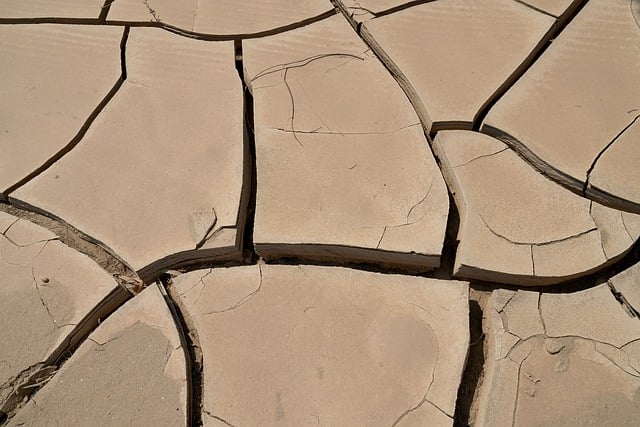
Management Strategies to Prevent Soil Erosion
Introduction
Soil erosion is a significant environmental concern that affects land productivity, water quality, and ecosystem health. It occurs when soil is displaced by wind, water, or human activity, leading to the degradation of land and loss of fertile topsoil. Effective management strategies are essential to prevent soil erosion and restore eroded areas. This article outlines various approaches to mitigate soil erosion, focusing on vegetation, structural solutions, and soil management practices.
Understanding Soil Erosion
Soil erosion can be classified into several types, including water erosion, wind erosion, and tillage erosion. Water erosion is the most common form, often exacerbated by heavy rainfall and poor land management practices. Wind erosion typically occurs in arid regions where vegetation cover is sparse. Tillage erosion results from agricultural practices that disturb the soil structure. Understanding the type of erosion present is crucial for selecting appropriate management strategies.
Vegetation as a Natural Barrier
One of the most effective ways to combat soil erosion is through the use of vegetation. Plants help stabilize the soil by anchoring it with their root systems, reducing the impact of raindrops on the soil surface, and slowing down water runoff. The following strategies can be employed:
- Replanting Native Vegetation: Native plants are well-adapted to local conditions and can thrive in challenging environments. They require less maintenance and are more resilient to pests and diseases. Groundcover plants, shrubs, and trees can all play a role in preventing erosion.
- Using Mulch: Applying a layer of mulch around plants can help retain soil moisture, suppress weeds, and protect the soil surface from erosion. Organic mulches, such as wood chips or straw, also improve soil fertility as they decompose.
- Creating Vegetative Buffers: Establishing vegetative buffer strips along waterways can significantly reduce soil erosion. These strips filter runoff, trap sediment, and provide habitat for wildlife.
Structural Solutions to Erosion
In addition to vegetation, structural solutions can be implemented to manage soil erosion effectively. These methods are particularly useful in areas experiencing severe erosion or concentrated water flow:
- Check Dams: Check dams are small barriers constructed across channels to slow down water flow and promote sediment deposition. They can be made from rocks, logs, or other materials and are particularly effective in gully erosion control.
- Terracing: Terracing involves creating stepped levels on sloped land to reduce runoff and soil erosion. This method is commonly used in agricultural practices and can significantly enhance water retention and soil stability.
- Retaining Walls: In areas with steep slopes, retaining walls can provide structural support to prevent soil movement. These walls can be constructed from various materials, including stone, concrete, or timber.
Soil Management Practices
Effective soil management practices are essential for maintaining soil health and preventing erosion. These practices include:
- Improving Soil Fertility: Soil fertility can influence the growth of vegetation, which is crucial for erosion control. Regular soil testing can help determine nutrient deficiencies and pH imbalances, allowing for targeted amendments.
- Reducing Tillage: Minimizing soil disturbance through reduced tillage practices can help maintain soil structure and prevent erosion. No-till or conservation tillage methods can enhance soil health and reduce erosion risk.
- Cover Cropping: Planting cover crops during the off-season can protect the soil from erosion. These crops help improve soil structure, enhance organic matter, and prevent weed growth.
Conclusion
Preventing soil erosion requires a multifaceted approach that combines vegetation, structural solutions, and sound soil management practices. By implementing these strategies, landowners and managers can protect their soil resources, enhance land productivity, and contribute to a healthier environment. It is essential to tailor these strategies to the specific conditions of the land to achieve the best results. Through collective efforts, we can combat soil erosion and promote sustainable land management for future generations.




















 গঙ্গা: পবিত্রতার প্রবাহ
গঙ্গা: পবিত্রতার প্রবাহ 
 Health
Health  Fitness
Fitness  Lifestyle
Lifestyle  Tech
Tech  Travel
Travel  Food
Food  Education
Education  Parenting
Parenting  Career & Work
Career & Work  Hobbies
Hobbies  Wellness
Wellness  Beauty
Beauty  Cars
Cars  Art
Art  Science
Science  Culture
Culture  Books
Books  Music
Music  Movies
Movies  Gaming
Gaming  Sports
Sports  Nature
Nature  Home & Garden
Home & Garden  Business & Finance
Business & Finance  Relationships
Relationships  Pets
Pets  Shopping
Shopping  Mindset & Inspiration
Mindset & Inspiration  Environment
Environment  Gadgets
Gadgets  Politics
Politics 